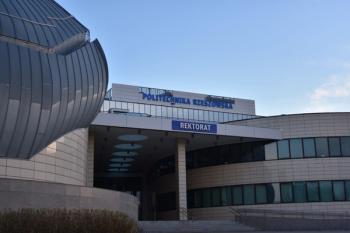
- The Application Notebook-10-02-2010
- Volume 0
- Issue 0
Light Scattering for the Masses Hydroxyethylstarches (HES)
Wyatt Technology Application Note
C. Augusten and K. Mäder, Institute of Pharmaceutics and Biopharmaceutics of the University of Halle, Halle/Saale, Germany (on behalf of Wyatt Technology Corp., Santa Barbara, California, USA).
Hydroxyethylstarches (HES) are used increasingly as plasma expanders in medical applications. The HES' circulation time in the blood depends strongly on its molar mass distributions. Historically, polysaccharide characterization by gel permeation chromatography (GPC) has been problematic, especially if high molar mass components are present. Due to its superior separation capability, especially on molecules exceeding 50 kDa, flow field-flow fractionation (Flow-FFF) is an excellent separation alternative. By coupling this technology to a multiangle light scattering (MALS) detector, such as a DAWN or miniDAWN, absolute values can be determined without making any assumptions.
We characterized 0.2% (w/v) HES solutions in doubly-distilled water. The HES types were 200/0.5, 130/0.42 and 70/0.5 from Serumwerk Bernburg, Germany. The FFF system was an Eclipse connected to a DAWN EOS and an RI detector (Shodex 101). Volumes of 100 µL were injected into the 350 µm spacer channel containing a 10 kDa regenerated cellulose membrane. A channel flow of 1 mL/min was kept constant while the cross flow decreased linearly from 2 mL/min to 0 mL/min within 20 minutes. Data were evaluated using Wyatt's ASTRA software package.
The aF-FFF/MALS fractograms of the HES types are compared in Figure 1. Corresponding to normal mode Flow-FFF theory, samples with smaller average molar mass elute faster. In Figure 2 the molar mass distributions are given as cumulative weight fraction plots. As is evident in the plots, monomodal distributions were successfully achieved. The values covered a range from approx. 20 kDa to approx. 600 kDa and up to 2 GDa in size, depending on the characterized HES type. Thus, the average molar mass value was mainly influenced by high molar mass fractions. This was also indicated by higher polydispersity values for HES types with higher molar mass.
Figure 1: The fractograms of the three samples with their molar mass values overlaid.
Asymmetrical FFF/MALS is, therefore, an excellent method for characterizing medical polysaccharides such as HES. The main advantage of this technique is that molar mass distributions can be determined from absolute values over an extremely wide range of masses.
Figure 2: Three different HES samples shown on the cumulative weight fraction plot of ASTRA, indicating the large differences among them.
This note graciously submitted by C. Augsten, K. Mäder, Institute of Pharmaceutics and Biopharmaceutics of the University Halle, W.-Langenbeck-Str. 4, 06120 Halle/Saale, Germany.
DAWN, miniDAWN, ASTRA, Optilab and the Wyatt Technology logo are registered trademarks of Wyatt Technology Corporation. ©2007 Wyatt Technology Corporation 8/9/07.
Wyatt Technology Corporation
6300 Hollister Avenue, Santa Barbara California 93117, USA
tel. +1 805 681 9009 fax +1 805 681 0123
E-mail:
Articles in this issue
about 15 years ago
Light Scattering for the Masses Heparin Characterizationabout 15 years ago
Is There Really a Difference Between Flash and HPLC for LC Purification?about 15 years ago
Peptide Mapping of a Monoclonal Antibody Using Agilent Poroshell 120about 15 years ago
Extend UHPLC Column Lifetime with KrudKatcher Ultra In-line Filtersabout 15 years ago
Making Non-Electrochemically Active Compounds Electrochemically ActiveNewsletter
Join the global community of analytical scientists who trust LCGC for insights on the latest techniques, trends, and expert solutions in chromatography.




